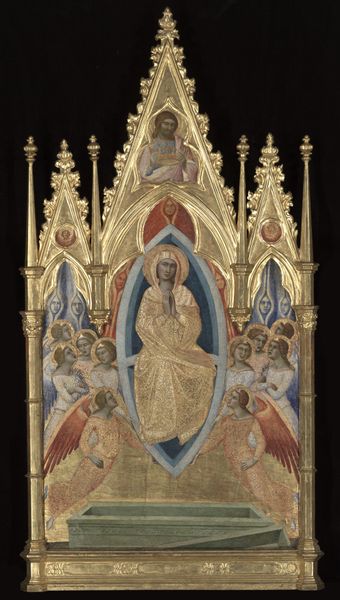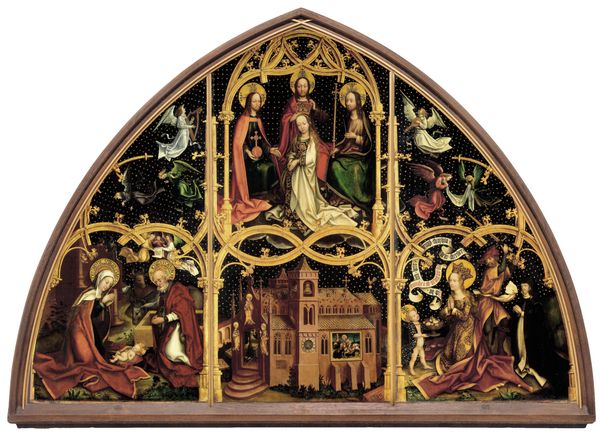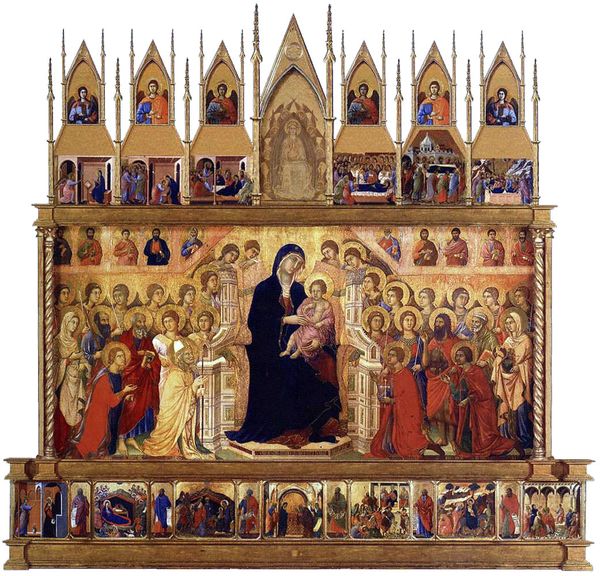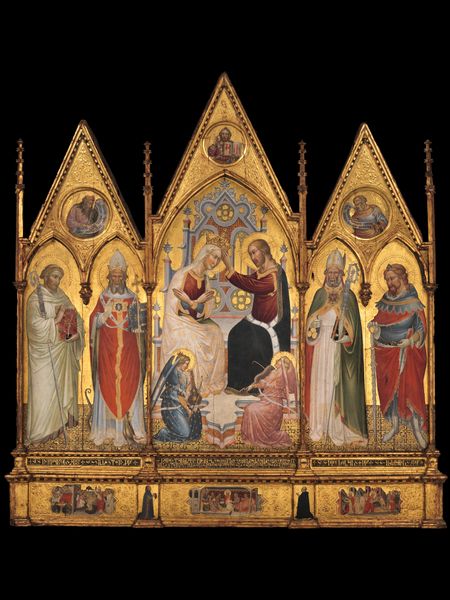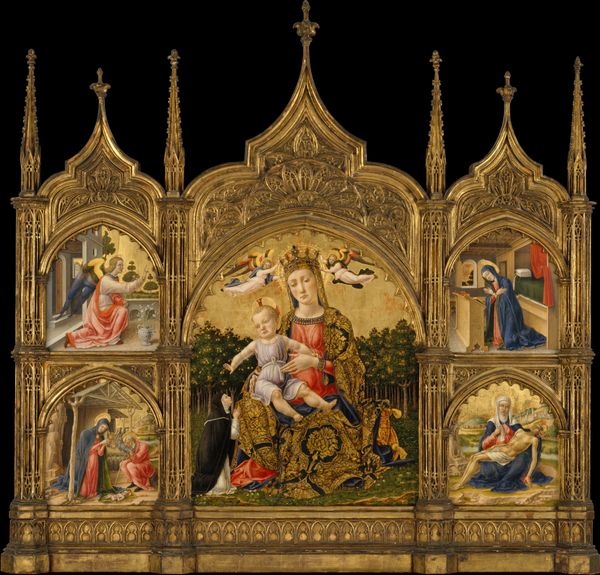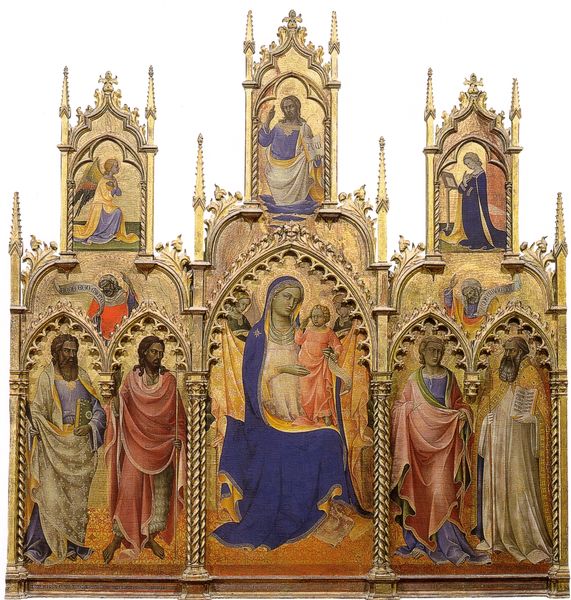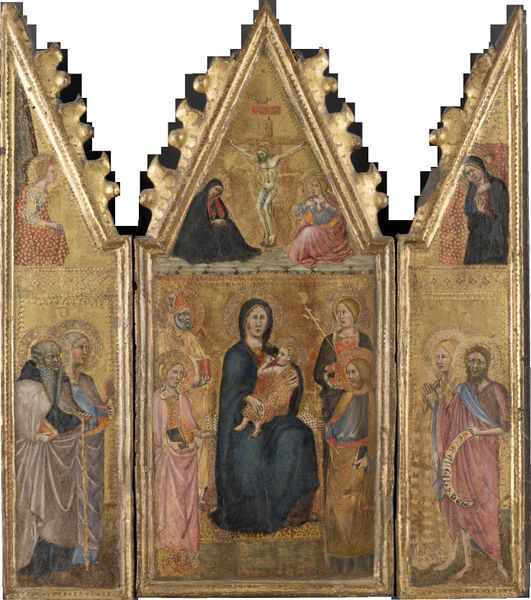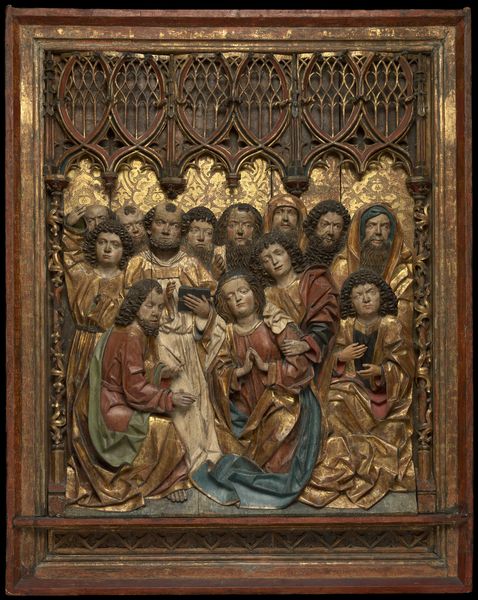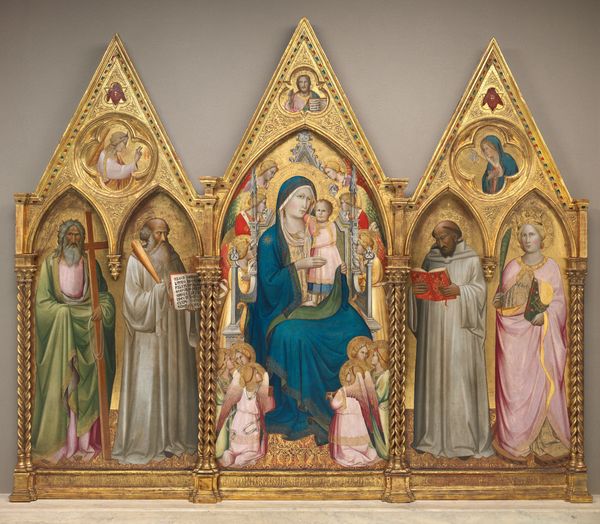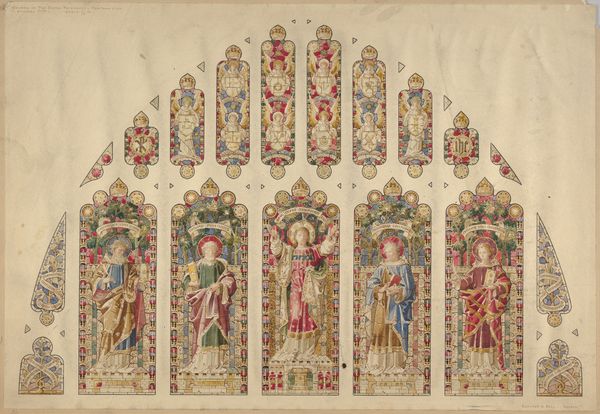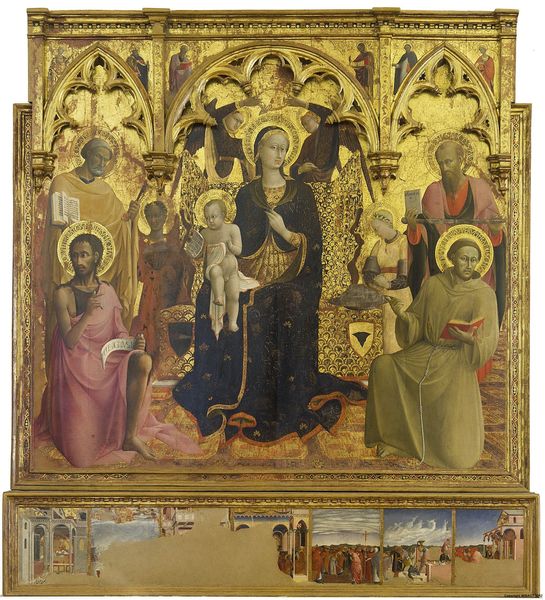
panel, tempera, painting, wood
#
portrait
#
panel
#
narrative-art
#
tempera
#
painting
#
gothic
#
figuration
#
madonna
#
child
#
wood
#
italian-renaissance
#
virgin-mary
#
miniature
#
watercolor
#
historical building
Dimensions: (a) 49 1/4 x 24 1/4 in. (125.1 x 61.5 cm); (b) 49 x 24 3/4 in. (124.5 x 62.9 cm); (c) 57 x 29 in. (144.8 x 73.7 cm); (d) 49 x 24 3/4 in. (124.5 x 62.9 cm); (e) 49 x 24 1/2 in. (124.5 x 62.2 cm)
Copyright: Public Domain
Curator: Standing before us is an Italian Renaissance tempera and gold on wood panel of *Virgin and Child with the Pietà and Saints*. It was likely created between 1470 and 1499. Editor: The gold is striking—it radiates outwards and creates this sense of the divine touching the material world. It's intricate; look at the architecture and the details on Mary’s garments. Curator: And observe the distinct narrative arcs woven into a singular piece. On the upper register, there is The Pietà. Considering how it centers Mary, one can explore this as a poignant declaration of a woman's suffering within a patriarchal religious structure. Her sorrow is monumental. Editor: The arrangement is clever; all the side figures direct our eye toward the center—to that intensely tragic scene above and to Mary and Jesus, below. There’s a rhythm created by the varying textures and color palettes. Curator: Absolutely. Let’s consider this artwork through the lens of religious art and its function in shaping social identities and spiritual expression in the Italian Renaissance. Notice the inclusion of particular saints; what might their presence reveal about the concerns and needs of the patrons? The composition underscores communal piety, offering viewers a spiritual and social roadmap. Editor: Note also, if you will, the somewhat flattened perspective, almost like a stage set. This, coupled with the vibrant color choices—the deep blues and reds—creates a jewel-like quality that heightens its visual impact. Curator: Exactly, the use of gold serves to emphasize its importance but might also raise questions about wealth, power, and art’s relationship to socioeconomic structures of the period. What did this kind of artistic patronage mean within the realities of the developing world? Editor: It’s fascinating to decode these Renaissance methods—the symbolism, certainly, but also the meticulous technique, to grasp the work on its own visual terms. Curator: Seeing it also as a point of cultural production, situated within the complex negotiations of religion, politics, and identity in the era, it opens to new avenues of understanding the society which birthed it. Editor: I agree—seeing how it simultaneously pulls us in to gaze and also to question...that's quite remarkable.
Comments
No comments
Be the first to comment and join the conversation on the ultimate creative platform.
